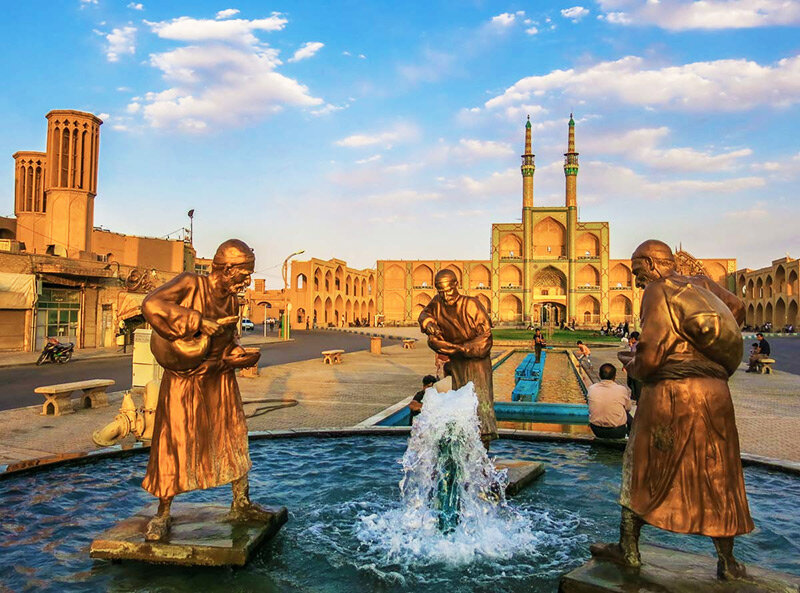Coronavirus shuts Yazd’s museums, historical sites once again

TEHRAN- All museums and historical sites of six cities in the central province of Yazd have gone on lockdown again until further notice following the increase in the number of people infected with the coronavirus, an official in charge of the province’s museums and historical properties has said.
While museums and historical sites in Yazd, Abarkuh, Bafq, Meybod, Khatam, Mehriz are closed to the public to prevent the spread of the coronavirus, these places in other cities across the province can be visited observing strict health protocols, ISNA quoted Elaheh Khakbaz as saying on Monday.
According to the Coronavirus Control Operations Headquarters, even in these cities, visiting all sections of the museums and some historical sites are not possible, and groups of visitors must be less than six people, she noted.
With its winding lanes, a forest of badgirs (wind catchers), mud-brick houses, atmospheric alleyways, and centuries of history, Yazd is one of the top tourist destinations in Iran.
Back in July, however, provincial tourism chief Seyyed Mostafa Fatemi announced that coronavirus outbreak has squandered all efforts made to promote the tourism capacity of Yazd province.
He also mentioned that people active in tourism and handicrafts sectors have taken a severe hit from coronavirus pandemic and their activities are closing down one by one.
The country closed cultural heritage museums and historical sites across the country in a preventive measure amid fears of coronavirus outbreak back in February, but as the coronavirus lockdown was eased, they were reopened in early May.
Due to a sharp rise in the number of coronavirus infections and deaths, all art and cultural centers, universities, schools, seminaries, English schools, libraries, movie theaters, museums, mosques, beauty salons, and several other entities have been shut down once again.
While Museums in the Iranian capital of Tehran have reopened their doors to the public after one week of closure, Mohammadreza Kargar, the tourism ministry’s director for museums and historical properties has announced that the activity of museums in other provinces is subject to the decision of the provincial headquarters.
Back in June, the official announced that Iranian museums and historical sites have taken 600 billion rials (about $14.2 million) hit from the coronavirus outbreak.
In mid-July, Cultural Heritage, Tourism, and Handicrafts Minister Ali-Asghar Mounesan announced that revenues from museums and historical sites were almost eight billion rials (about $190,000) during the first three months of the current Iranian calendar year (started March 20), a sharp decline compared to around 300 billion rials (over $7 million) in the same period last year.
He also noted that most of the income is spent on preserving the historical sites and museums, but due to the closure of the sites, the ministry is facing a challenge in maintaining these places.
Several Iranian provinces have extended the closure of their museums and some historical sites as they are on the red risk zone.
In July 2017, the historical structure of the city of Yazd was named a UNESCO World Heritage. Wedged between the northern Dasht-e Kavir and the southern Dasht-e Lut on a flat plain, the oasis city enjoys a very harmonious public-religious architecture that dates from different eras.
Yazd is usually referred to as a delightful place to stay, or a “don't miss” destination by almost all of its visitors.
Water is brought to the city by the qanat system. Each district of the city is built on a qanat and has a communal center.
The use of earth in buildings includes walls and roofs by the construction of vaults and domes. Houses are built with courtyards below ground level, serving underground areas. Wind-catchers, courtyards, and thick earthen walls create a pleasant microclimate.
Partially covered alleyways together with streets, public squares and courtyards contribute to a pleasant urban quality. The city escaped the modernization trends that destroyed many traditional earthen cities.
It survives today with its traditional districts, the qanat system, traditional houses, bazaars, hammams, water cisterns, mosques, synagogues, Zoroastrian temples, and the historic garden of Dolat-Abad. The city enjoys the peaceful coexistence of three religions: Islam, Judaism, and Zoroastrianism.
ABU/MG
Leave a Comment